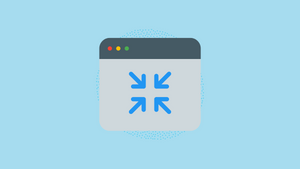Full-screen mode offers an immersive experience on Windows 11, but there are times when you need to exit it to access other applications or features. Whether you're dealing with an unresponsive app or simply want to return to the standard window view, several methods can help you exit full-screen mode efficiently. This guide outlines the most effective solutions to restore your window to its normal size.
Press F11 function key
Step 1: Press the F11 key on your keyboard to quickly exit full-screen mode. This key acts as a universal shortcut for toggling full-screen mode in many applications and web browsers on Windows 11.
If you're using a laptop and the F11 key doesn't respond, you may need to hold down the Fn (Function) key near the Windows key while pressing F11.
Use the Alt+Space menu
Step 1: If the title bar controls are not visible and the F11 key doesn't work, press the Alt + Space keys together on your keyboard. This will bring up the window control menu for the active application.
Step 2: In the window menu that appears, click on the 'Restore' option to exit full-screen mode and return the window to its previous size. Alternatively, you can select 'Minimize' to send the window to the taskbar.

Use the maximize/window control
Step 1: Locate the 'Restore Down' or 'Maximize' button in the top-right corner of the application window. This control is typically found between the 'Minimize' and 'Close' buttons.
Step 2: Click the 'Restore Down' button (displayed as two overlapping squares) to exit full-screen mode. This will resize the window to a smaller size, allowing you to adjust it as needed. Clicking the 'Maximize' button again will return the window to full-screen mode.

Alternatively, you can minimize the window by clicking the 'Minimize' button (represented by a hyphen). Keep in mind that minimizing sends the application to the taskbar, and you will need to click its icon to reopen it.

Press the Esc key
Step 1: For media players and certain applications like YouTube or VLC Media Player, pressing the Esc (Escape) key on your keyboard will exit full-screen mode. This method is specific to applications that recognize the Esc key as a command to exit full-screen viewing.
Use Windows taskbar
Step 1: Hover your mouse cursor over the application's icon on the taskbar to display a thumbnail preview of the open window.
Step 2: Right-click on the thumbnail preview to open a context menu. Click on the 'Restore' option to resize the window and exit full-screen mode.

Disable full-screen mode on browsers
Step 1: If your web browser is in full-screen mode, the toolbars and address bar will be hidden. Move your mouse cursor to the top edge of the screen to reveal the hidden tabs and toolbar.
Step 2: Click on the 'Exit Full Screen' icon that appears, or press the F11 key on your keyboard to return to windowed mode.

Use Task Manager
Step 1: If an application becomes unresponsive while in full-screen mode, you can force it to close using Task Manager. Open Task Manager by pressing Ctrl + Shift + Esc on your keyboard, or by searching for 'Task Manager' in the Start menu.

Step 2: In the Task Manager window, ensure you're on the 'Processes' tab. Scroll through the list to find the unresponsive application.
Step 3: Click on the application's name to select it, then click the 'End Task' button at the bottom-right corner of the window to terminate the program.

Workarounds to exit full-screen mode
Jump to desktop
Step 1: Press the Windows + D keys simultaneously to minimize all open windows and display your desktop. While this doesn't exit full-screen mode in the application, it allows you to access other programs or the taskbar.
Switch to another app
Step 1: Use the Alt + Tab keyboard shortcut to switch between open applications. Hold down the Alt key and press the Tab key to cycle through your running programs. Selecting another application can help you move away from a full-screen app.
These methods should assist you in exiting full-screen mode on your Windows 11 computer, whether you're encountering an unresponsive application or simply wish to return to the standard window view.











Member discussion